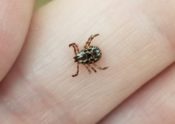

The American dog tick is one of the most common species found in Texas. (AgriLife photo by Wizzie Brown)
As the warm weather draws more and more Texans outdoors, Texas A&M AgriLife Extension Service experts want people to be aware of the danger ticks pose.
“Ticks are blood feeders in all life stages and can transmit pathogens that can lead to disease transmission,” said Sonja Swiger, Ph.D., AgriLife Extension entomologist, Stephenville.
“While we do see tick-borne disease here in Texas, our rates are much lower than many other states,” she said. “However, people need to be aware and vigilant. That is the only way to stop them.”
Where ticks are found
Swiger said since ticks can’t fly, the only way to be exposed to them is by entering their space or by catching them from an animal that has picked them up.
Unfortunately, ticks can be found pretty much anywhere.
“Aside from if you’re in a concrete jungle, there can be ticks,” Swiger said. “They can be in overgrown brush, a field, forest, park, tall grasses and anywhere there is wildlife.”
Given that many people have been inside more than normal due to COVID-19 and social distancing, Swiger said we do not yet know what that will mean, if anything, when it comes to ticks. Most ticks only live outdoors unless they hitch a ride into a home on a human or animal host.
“Since people haven’t been outdoors as much, that may mean some areas haven’t been mowed in a while or brush hasn’t been cleared. We’ve also seen wildlife coming into some urban areas more during these periods while people have been staying indoors. Will that increase exposure? We just don’t know yet, so people need to take precautions.”
Ticks are something people need to be aware of year-round, although as the weather warms their populations swell, typically peaking in the summer and then declining in the fall. Swiger said we are at the start of their “plentiful season.”
Tick awareness and prevention
As Lyme Disease Awareness Month ends and many people plan to be outdoors for the Memorial Day weekend, now is a good time to review how to protect yourself and your family from these arthropods.
Lyme disease is the most common tick-borne disease, with an average of 30,000 cases a year reported to the Centers for Disease Control and Prevention. Lyme disease can also affect pets. There are numerous other diseases such as Rocky Mountain spotted fever and tularemia that ticks can transmit to people. Ticks are also responsible for often-deadly diseases in livestock such as cattle fever.
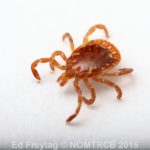
Lone Star ticks gets its name from the single silvery-white spot located on the female’s back. (Image by Ed Freytag, NOLA)
There are 11 common species of ticks found in Texas. The black-legged tick, brown dog tick, Lone Star tick, Gulf Coast tick and American dog tick are the species the average person is most likely to encounter. The TAMU TickApp for Texas and the Southern Region is a helpful tick identification and resource tool.
Ticks typically like to latch on to people’s head, hair, chest, armpit, groin, waist and back of the knees, so be extra vigilant when checking these areas. Headwear and light-colored clothing that protects as much skin as possible is also a good idea if you’ll be outdoors where ticks are present. Pants should be tucked into boots to minimize the odds of bringing an unwanted bloodsucker home.
“Check yourself after being outdoors,” said Swiger. “Also check your pets if they have been outdoors.”
Swiger said people who let their pets sleep in their bed with them need to be extra vigilant.
Around your home, keep lawns mowed, brush trimmed and weeds whacked. Be especially diligent about the areas around swing sets, sand boxes and children’s play areas.
Since rodents are part of the tick-borne disease cycle, eliminate places they like to live and hide. Try to avoid having brush piles and keep any building materials and gardening supplies off the ground.
If a tick is found, it can be removed with tweezers. Grasp the tick as close to the head as possible and pull straight out. If the head breaks off under the skin and cannot be removed, or if any pain, lesion or a rash develops, contact a doctor. If fever, headache, joint pain, muscle pain or swollen lymph nodes occur within 30 days of a tick bite, you should also inform your doctor.
“We don’t want this holiday weekend to be a perfect storm for ticks with the warmer weather, a lot of people outdoors and perhaps more overgrown brush than usual,” Swiger said. “I don’t want people to worry, I just want people to be aware.”
Written by Susan Himes, AgriLife Communications Specialist.


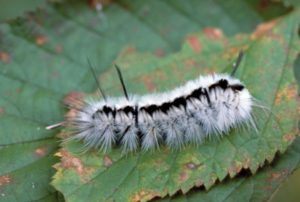

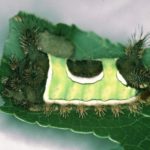


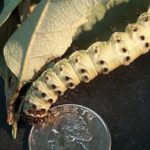

 Since March 23, 2020, most TX schools
Since March 23, 2020, most TX schools 
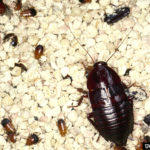


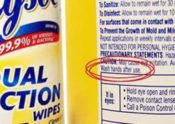
 If empty store shelves have you looking under your sink and wondering if the
If empty store shelves have you looking under your sink and wondering if the 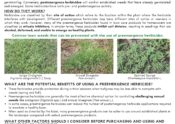
 WHAT IS THAT MOUND??? We have all seen them, a mound in the yard and most of us assume it’s a mound it’s fire ants. Did you know that crawfish, earthworms, gophers, moles, June Beetles, ground-nesting bees, ground nesting wasps and mole crickets to name a few also make mounds. Drs. Chrissie Segars and Mike Merchant developed this handy publication on
WHAT IS THAT MOUND??? We have all seen them, a mound in the yard and most of us assume it’s a mound it’s fire ants. Did you know that crawfish, earthworms, gophers, moles, June Beetles, ground-nesting bees, ground nesting wasps and mole crickets to name a few also make mounds. Drs. Chrissie Segars and Mike Merchant developed this handy publication on  When is the best time to apply pre-emergent herbicides for controlling annual grassy and broadleaf weeds in lawns and landscapes is one of the hardest answers for our turf grass experts. In this factsheet Dr. Becky Grubbs outlines what are pre-emergent herbicides, what you need to know before you purchase and apply, plus a guide of when you can think about making those applications. Many individuals wait too late to apply their pre-emergent herbicides and then wonder why they still have problems with winter weeds in the lawn once these annual weeds germinate and start to grow, most of the pre-emergent herbicides will have no effect on the weed. the same is true for summer weeds like crabgrass, when you start to see this grass it’s too late for a pre-emergent. However, using this chart to help you determine when you need to make applications can assist the IPM program and be part of your written guidelines for the grounds program. Click on this link to download and save
When is the best time to apply pre-emergent herbicides for controlling annual grassy and broadleaf weeds in lawns and landscapes is one of the hardest answers for our turf grass experts. In this factsheet Dr. Becky Grubbs outlines what are pre-emergent herbicides, what you need to know before you purchase and apply, plus a guide of when you can think about making those applications. Many individuals wait too late to apply their pre-emergent herbicides and then wonder why they still have problems with winter weeds in the lawn once these annual weeds germinate and start to grow, most of the pre-emergent herbicides will have no effect on the weed. the same is true for summer weeds like crabgrass, when you start to see this grass it’s too late for a pre-emergent. However, using this chart to help you determine when you need to make applications can assist the IPM program and be part of your written guidelines for the grounds program. Click on this link to download and save  Water-Wise landscaping is a term used to describe quality landscaping that conserves water and protects the environment. Depending on where you live, your community may limit your outdoor water use during the summer months. However, the time to plan your yard, community garden, or outdoor entertaining area is now.
Water-Wise landscaping is a term used to describe quality landscaping that conserves water and protects the environment. Depending on where you live, your community may limit your outdoor water use during the summer months. However, the time to plan your yard, community garden, or outdoor entertaining area is now. 
 What’s that saying about March – in like a lamb out like lion or vice versa. We have always associated that saying with the weather but now I am beginning to think COVID-19 is following this model. It started slow and as March is coming to end this virus is beginning to roar. For us in pest management this has been an odd time, do you service accounts when we are trying to practice social distancing (I prefer physical distancing)? What is considered essential services when it comes to pest control? How about your school district is it completely shut down, meaning that no one is watching your IPM program? It’s still spring in TX, depending on where you are at you are seeing mosquitoes, fire ants, nuisance ants, millipedes, crane flies, and rodents to name a few of the more annoying pests in our state.
What’s that saying about March – in like a lamb out like lion or vice versa. We have always associated that saying with the weather but now I am beginning to think COVID-19 is following this model. It started slow and as March is coming to end this virus is beginning to roar. For us in pest management this has been an odd time, do you service accounts when we are trying to practice social distancing (I prefer physical distancing)? What is considered essential services when it comes to pest control? How about your school district is it completely shut down, meaning that no one is watching your IPM program? It’s still spring in TX, depending on where you are at you are seeing mosquitoes, fire ants, nuisance ants, millipedes, crane flies, and rodents to name a few of the more annoying pests in our state.
 Consider using and sharing this document
Consider using and sharing this document 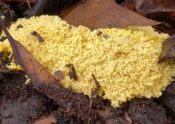
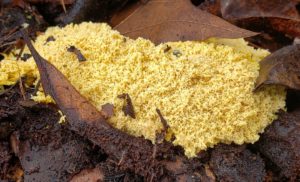

 Chemical treatment is not warranted for this problem. These organisms are very sensitive to the environment. The best approach to controlling slime mold is by modifying the environment. Slime molds do not survive well in dry conditions.
Chemical treatment is not warranted for this problem. These organisms are very sensitive to the environment. The best approach to controlling slime mold is by modifying the environment. Slime molds do not survive well in dry conditions.


 February is National Pesticide Safety Education month and I decided to devote this month’s newsletter to this topic.
February is National Pesticide Safety Education month and I decided to devote this month’s newsletter to this topic.
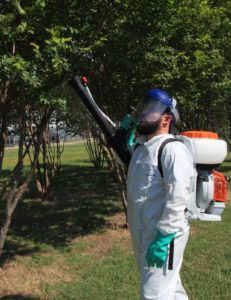 Human Health Precautionary Statements. These statements must follow signal words and provide additional information about health precautions that should be taken when using the pesticide. Such statements might include information on which routes of entry are of special concern (e.g., mouth, eyes, lungs). In addition to route of entry, the label may list specific actions needed to prevent poisoning accidents. For example, the label may say: “Do not breathe vapors or spray mist,” “Do not get on skin or clothing,” or “Do not get in eyes.”
Human Health Precautionary Statements. These statements must follow signal words and provide additional information about health precautions that should be taken when using the pesticide. Such statements might include information on which routes of entry are of special concern (e.g., mouth, eyes, lungs). In addition to route of entry, the label may list specific actions needed to prevent poisoning accidents. For example, the label may say: “Do not breathe vapors or spray mist,” “Do not get on skin or clothing,” or “Do not get in eyes.”
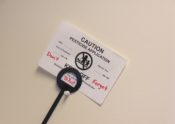
 IPM Coordinators and pesticide applicators are required to keep records; however, not everyone keeps records the same and completely. Today we are going to look at what you need to maintain good records so that they can support your program and the important work you do. What you put out, when you put it out, how you apply it, who applied it, and the exact location you made that application is critical to ensuring regulators, customers and the public know exactly what you did and why.
IPM Coordinators and pesticide applicators are required to keep records; however, not everyone keeps records the same and completely. Today we are going to look at what you need to maintain good records so that they can support your program and the important work you do. What you put out, when you put it out, how you apply it, who applied it, and the exact location you made that application is critical to ensuring regulators, customers and the public know exactly what you did and why.
 The
The  attacked using ransomware. Both entities lost EVERYTHING and had to start over. Because emails were compromised some digital accounts had to be scrubbed. What saved some was the belief of backing up data on a separate hard drive and putting that in a secure location. Because the other threat is fire and flood, if you lost the computer, is that data safe someplace else. Take this as a cautionary tale to ensure all of your records no matter what they are, are protected in the event of a natural disaster or corruption of the malicious type.
attacked using ransomware. Both entities lost EVERYTHING and had to start over. Because emails were compromised some digital accounts had to be scrubbed. What saved some was the belief of backing up data on a separate hard drive and putting that in a secure location. Because the other threat is fire and flood, if you lost the computer, is that data safe someplace else. Take this as a cautionary tale to ensure all of your records no matter what they are, are protected in the event of a natural disaster or corruption of the malicious type.
 .
.